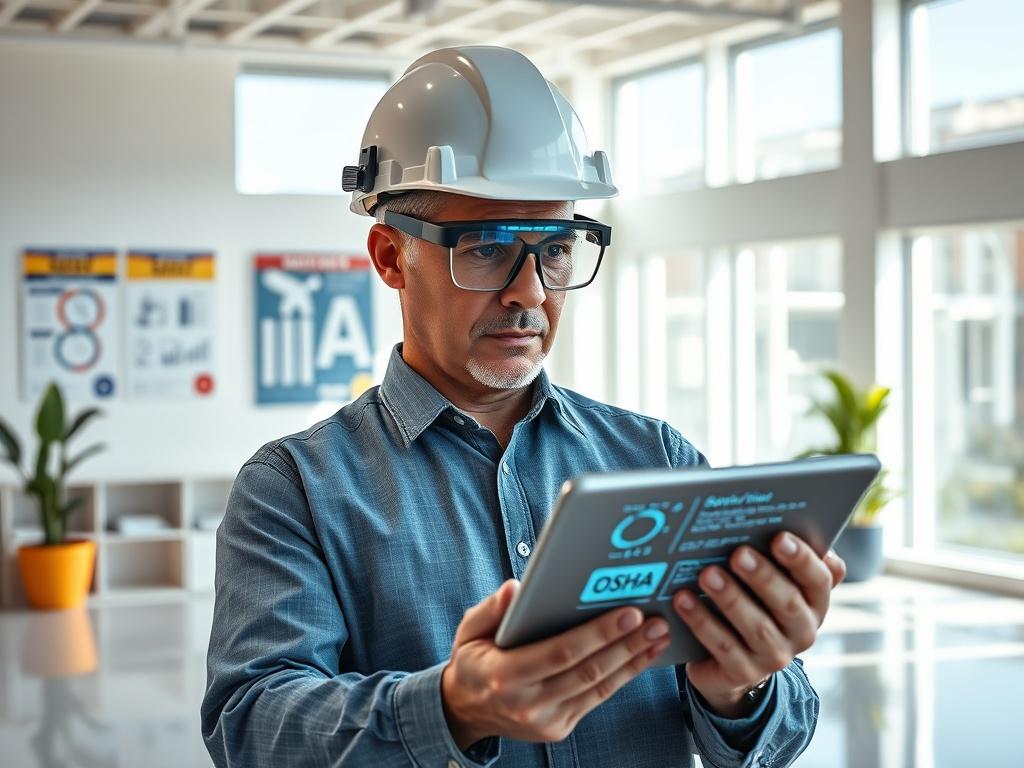
In today's rapidly evolving workplace, ensuring safety is more critical than ever. Businesses are increasingly turning to innovative technologies to enhance their safety protocols, and artificial intelligence (AI) stands at the forefront of this transformation. With its ability to analyze vast amounts of data and streamline processes, AI technology is revolutionizing the way companies approach compliance with OSHA regulations. By automating these protocols, organizations not only bolster their safety measures but also create a more efficient and proactive safety culture.
As we delve deeper into the potential of AI in workplace safety, we will explore how it simplifies compliance processes, minimizes human error, and enhances overall safety outcomes. From predictive analytics that identify potential hazards before they occur to real-time monitoring systems that ensure adherence to regulations, AI solutions are proving to be invaluable in protecting workers and fostering a secure work environment. Join us as we discover how AI technology transforms workplace safety, showcasing compelling success stories that highlight the real-world impact of these groundbreaking innovations.
Unlocking the future of workplace safety: Harnessing AI to automate OSHA protocols
Artificial Intelligence (AI) has emerged as a game-changer in workplace safety, unlocking a new era of efficiency and reliability. By automating Occupational Safety and Health Administration (OSHA) protocols, organizations significantly improve compliance and minimize human error. Through real-time data collection and analysis, AI solutions help identify potential hazards, assess risks, and implement preventive measures. Gone are the days of manual paperwork and labor-intensive safety checks; AI seamlessly integrates into daily operations, transforming safety management into a proactive, rather than reactive, discipline.
Furthermore, integrating AI technology fosters a culture of safety that resonates throughout the organization. Employees can engage with AI-driven platforms that provide instant feedback and insights, contributing to a safer work environment. These tools not only simplify the compliance process but also enhance employee training and awareness. As businesses adopt AI solutions, they witness a profound shift in how safety is prioritized, ultimately leading to a safer workplace. Discover how AI technology transforms workplace safety by automating OSHA protocols, paving the way for healthier and more productive work environments.
Transformative power of AI technology: Streamlining compliance and enhancing safety
AI technology fundamentally changes how organizations approach workplace safety by automating compliance with OSHA protocols. With machine learning algorithms analyzing vast amounts of data, businesses can identify potential hazards, track compliance metrics, and receive real-time alerts when safety violations arise. These intelligent systems not only ensure adherence to regulatory standards but also significantly reduce the risks of accidents and injuries in the workplace. By automating routine safety checks and generating compliance reports, companies can allocate resources more effectively, allowing safety teams to focus on high-priority tasks that enhance overall workplace safety.
Moreover, AI-driven safety solutions provide actionable insights, enabling organizations to make informed decisions regarding their safety strategies. Predictive analytics helps companies foresee potential hazards before they escalate into critical issues, fostering a proactive safety culture. This fusion of technology and human oversight results in a more resilient working environment, where employees can thrive knowing they are protected by advanced safety measures. As businesses embrace these innovations, they not only protect their workforce but also improve productivity and efficiency, establishing a safer and more compliant workplace for everyone involved.
Real-world impact: Success stories of AI-driven safety solutions in action
AI-driven safety solutions have already made a significant impact across various industries, showcasing their potential to enhance workplace safety dramatically. For instance, a leading manufacturing company implemented an AI-based monitoring system that tracks employee movements and identifies unsafe behaviors in real time. By integrating predictive analytics, the system alerted supervisors to potential hazards before accidents occurred, reducing workplace injuries by 30% within the first year. This proactive approach not only safeguarded employees but also improved overall productivity, demonstrating how harnessing AI technology can create a safer work environment.
Another compelling example can be found in the construction industry, where a construction firm adopted AI tools to automate safety inspections. Utilizing computer vision technology, these AI solutions scanned job sites to detect violations of OSHA protocols and flag potential risks, such as lack of personal protective equipment (PPE). As a result, the company experienced a 40% reduction in safety-related incidents. By allowing AI to manage compliance and safety checks, businesses can focus more on empowering their workforce, ultimately fostering a culture of safety that aligns with the highest industry standards.